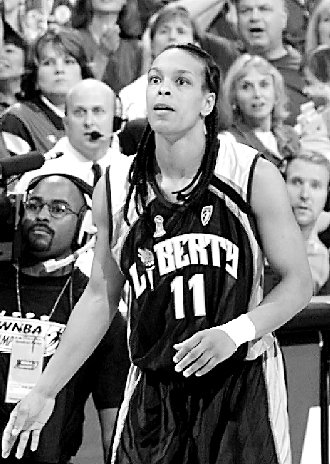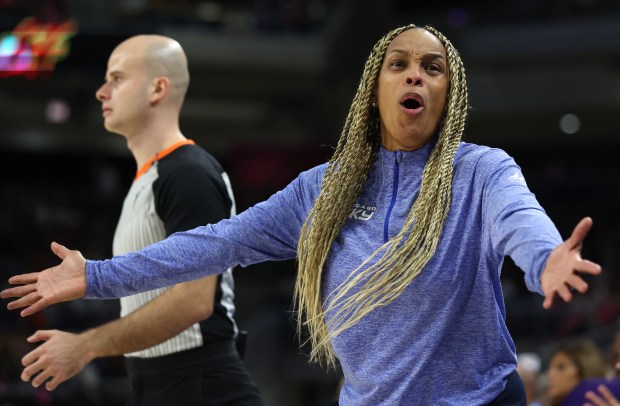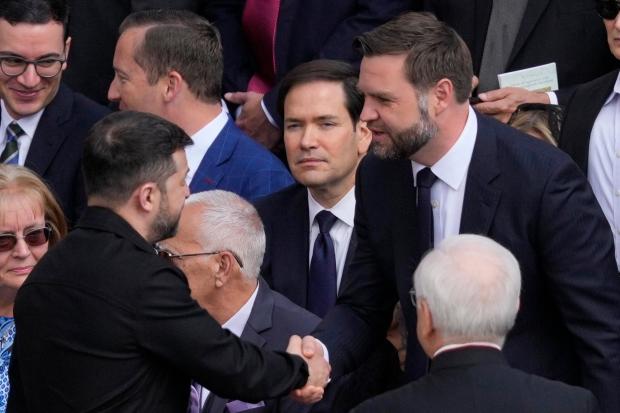For 25 years, one image has defined Teresa Weatherspoon’s WNBA legacy.
It was, perhaps, the closest thing to a miracle that Weatherspoon summoned over the course of her career.
Sept. 4, 1999. Game 2 of the WNBA Finals. The New York Liberty trailed the Houston Comets by two points with 2.4 seconds left. The ball was inbounded to Weatherspoon, a player who averaged more assists than points for her career.
She took a risk that also felt like the only choice — launching the ball from 50 feet, left leg kicked back, right arm stretched as high as it would go.
The play became so immediately emblematic of the league that it still claims a simple two-word moniker. There will be other buzzer-beaters in WNBA history. But no other play in the league ever will be The Shot.
All Weatherspoon remembers about those 1.3 seconds is how long they took. The game was over. All that mattered was the ball and the space between her hand and the rim.
Everything else — the roar of the crowd, the pressure of Tina Thompson jockeying at her hip, the grief that had decimated Weatherspoon’s family for the entire season — froze as the shot followed an improbable parabola into the net.
“You know how they say it just feels like that was forever?” Weatherspoon said. “I felt it. I really felt like it was forever.”
Here’s the thing about The Shot. Weatherspoon still doesn’t like to talk about it.
She doesn’t like to talk about herself. And she doesn’t like to talk about losing. Asking her about The Shot is a vexing combination of the two, which earns an almost knee-jerk response: “Well, we didn’t win the championship.”
It’s true that The Shot only delayed the inevitable. The Comets stormed back the next night, overwhelming the Liberty 60-47 for their third straight title.
But it wasn’t meaningless. It represented the type of thrill the WNBA had promised to its fans. In that moment, the fledgling league could see a future of competition that had only just begun.
None of that mattered to Weatherspoon in the moment. She didn’t even watch a replay for years. It took time for her appreciation — of the moment, of the legacy she built for the Liberty — to fully sink in. And even now, Weatherspoon can’t abide trash talk from her Comets counterparts about that series.
“They know I’m still salty about it,” she said. “And I don’t really talk about it.”
There’s another reason Weatherspoon avoids the memory of 1999. That was the year she lost Anthony.
Although they were technically aunt and nephew, Weatherspoon described Anthony as more of a brother. They were only four years apart, growing up in the same home, swapping clothes and shooting hoops. After losses, Anthony was the only member of the Weatherspoon family who could pick up the phone and reach Teresa, talking her through the frustrations of a bad game.
“That was my best friend,” Weatherspoon said.
Anthony died on May 23, 1999, in a car crash. He was 19 and had just finished his freshman year at Stephen F. Austin State University, bound for something bigger. The day before his death — like every other day — Teresa and Anthony spoke on the phone, told each other they were proud of where they were headed in life.
After his death, Weatherspoon hardly could will her way back onto the court. There were times, she told reporters midway through the 1999 season, when she couldn’t stop tears from flowing on the court, even as she handled the ball and commanded the Liberty to the playoffs.
The 1999 Finals already were tinged with tragedy, coming just weeks after the death at age 32 of Comets point guard Kim Perrot, a close friend of Weatherspoon who had helped lead her team to two championships before a lung cancer diagnosis sidelined her for the 1999 season. For Weatherspoon, the pair of losses was a weight almost too heavy to carry.
Time has not dulled the pain. Not even close. Two and a half decades have passed, and even a mention of Anthony’s death, Weatherspoon said, makes her feel as if it’s happening all over again. And when she thinks about anything from that year — the Finals, The Shot — all she can think about is her nephew.
“When that shot went in, only my teammates knew what me and my family were thinking at that time,” Weatherspoon said. “That’s something I never really talk about. It’s much bigger than what most people think outside of the game.
“It was huge for us. It gave us another chance to play another game, which was excellent. It was another opportunity to play against an amazing basketball team, but it also meant something to me and our family at that time. Something huge.”

There’s another image from after The Shot that defined Weatherspoon perhaps more than the basket itself.
It’s not the famous one. Not Weatherspoon sitting on the court, fists clenched, mouth half-open in dumbfounded awe. Not the dogpile that ensued, Becky Hammon nearly crushing Weatherspoon into the hardwood as she disappeared under the swarm of her excited teammates.
No, this final image was quieter. Weatherspoon was left alone again after giving her final remarks in the on-court interview and turned, as if looking for a familiar face in the crowd. Then she lifted her left hand high above her head, finger jabbing at the ceiling, eyes following as she pointed upward.
That was for Anthony. A reminder and a thank you. A promise.
It’s a gesture Weatherspoon has repeated throughout her career, as a player and now as head coach of the Chicago Sky. Raising a finger high, pointing to the fan she cares about the most. Knowing all these years later, she’s still making her nephew proud.




